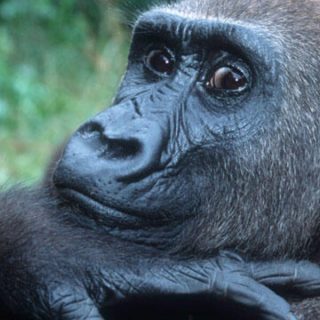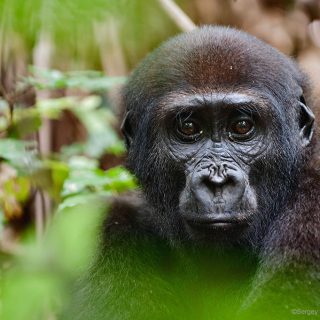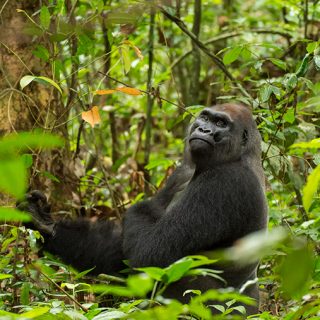Western Gorilla Facts, Lifespan, Height, Habitat, Predators
This page describes Western Gorilla Facts, Lifespan, Height, Habitat, Predators & Population.
One of the two gorilla subgroups found on the continent of Africa is the western gorilla (the other being the eastern gorilla). The western gorilla is the more common and larger of the two gorilla species.
The tropical rainforests and forests of western and central Africa, as well as lowland marshes and secondary woods, are home to the western gorilla. Due to the widespread deforestation and human use of their native environment, all western gorillas are now regarded as severely endangered.
The western lowland gorilla and the cross river gorilla are two distinct subspecies of the western gorilla. The two kinds of western gorillas are identified by their varied skull and tooth sizes, despite only having a small difference in appearance.
Western Lowland Gorilla in the Wild, Gabon
Western Gorilla
One of the great apes, which also includes humans, chimpanzees, orang-utans, and gorillas, is the western gorilla. Similar to the other great apes, the western gorilla has a variety of characteristics that make life in the jungle a little bit easier. One such characteristic is that it has opposable thumbs, which come in helpful when peeling fruit.
The western gorilla is an omnivore, but fruit—which it is known to travel great distances through the forests to find—makes up the majority of its diet. In addition to insects and occasionally small animals like lizards and rodents, the western gorilla also consumes leaves, nuts, and berries. The western gorilla has also been seen in the wild utilizing simple tools to obtain food more efficiently.
Massive cats like leopards and the occasional crocodile are the only real natural predators of the western gorilla in its native African woods because of its large size. Deforestation-related habitat loss and human hunting are the major threats to the western gorilla. Civil upheaval has recently taken over portions of the western gorilla’s range, which, along with poaching, has had a really devastating impact on natural populations.
Western Gorilla Facts
Main Prey: Leaves, Fruit, Flowers
Habitat: Rainforest and dense jungle
Predators: Human, Leopard, Crocodile
Diet: Herbivore
Lifestyle: Troop
Favorite: Food Leaves
Type: Mammal
Slogan: There are two sub-species!
Western Gorilla Physical Characteristics
Color: GreyBlack
Skin: Type Hair
Top Speed: 25 mph
Lifespan: 35 – 50 years
Weight: 100kg – 200kg (220lbs – 440lbs)
Height: 1.4m – 1.7m (4.7ft – 5.5ft)
Western Gorilla Pictures



